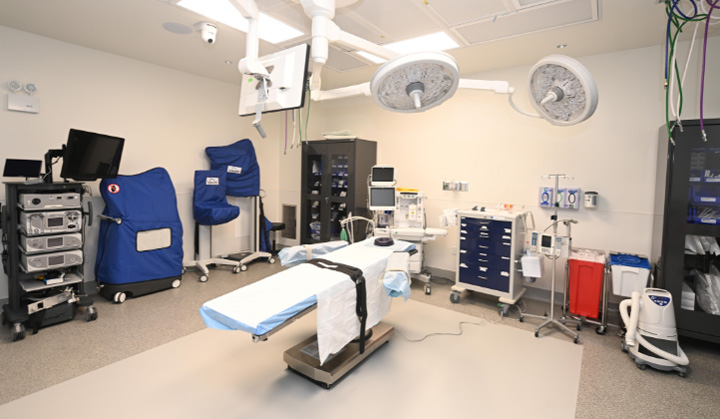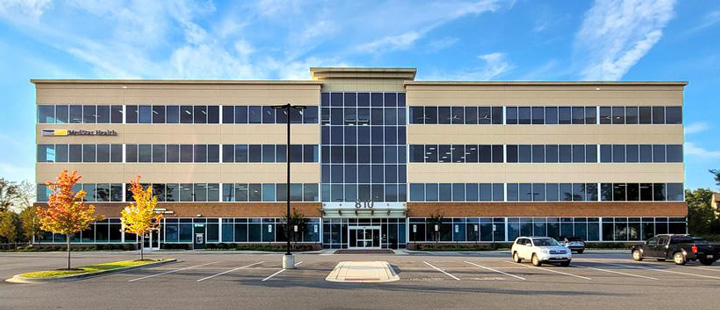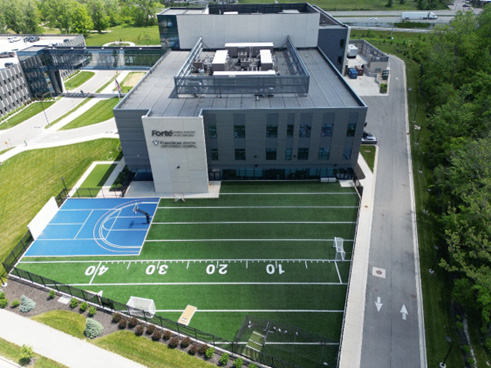Peakpoint Midtown West Surgery Center can accommodate 23-hour recoveries.
 LARGE AND VERSATILE Mount Sinai’s Peakpoint Midtown West Surgery Center features four spacious ORs that can host orthopedic, spine, neurosurgery and breast procedures. | Mount Sinai Health System
LARGE AND VERSATILE Mount Sinai’s Peakpoint Midtown West Surgery Center features four spacious ORs that can host orthopedic, spine, neurosurgery and breast procedures. | Mount Sinai Health System
New York City’s Mount Sinai Health System has opened Peakpoint Midtown West Surgery Center, a 25,106-square-foot multispecialty ASC in Manhattan. The new facility in the heart of America’s largest city is a joint venture among Mount Sinai, surgeons and Merritt Healthcare, an owner-operated firm focused exclusively on turnkey ASC development and management that seeks to “maximize hospital and physician ownership.”
The service lines running at opening are orthopedics, spine, neurosurgery and breast surgery, with the facility serving both adult and pediatric patients. The ASC hosts a robotic platform for total joint replacements, HANA tables for anterior hip replacements, and advanced imaging and pathology capabilities to support complex spine and breast surgeries. It features four large operating rooms and 12 recovery bays, and can accommodate 23-hour stays for recovery from more complex procedures in suites that include “beautifully appointed” bathrooms and showers.
The ASC is located one floor below Mount Sinai’s Breast Center, Imaging Center and Spine Center. As such, patients can benefit from a more integrated and convenient experience, according to physicians involved in the various specialties that use the center.
“Patients with spine problems can now see a non-operative spine physiatrist, have state-of-the-art imaging, have any needed injections, consult with an orthopedic spine specialist, consult with a neurosurgical spine specialist and, if needed, have minimally invasive outpatient spine surgery, all on two adjacent floors,” says Evan Flatow, MD, president of Mount Sinai West and Mount Sinai Morningside.
Stephanie Bernik, MD, FACS, chief of breast service at Mount Sinai West, says the ASC will similarly be a game changer for patients undergoing breast surgery. “Patients requiring breast surgery can see the breast specialist, have imaging performed and needle localization if needed, and have surgery without navigating a hospital campus or even leaving the building,” she says. “And the addition of onsite pathology in the coming months with real-time analysis will enable swift and informed decisions during the procedure itself by minimizing any delay. This capability not only upgrades the patient experience but also leads to faster, more precise treatments, improving overall outcomes and recovery times.”
“Our outpatient joint program will be housed in this exceptional center and is on an adjacent floor to a full-service, multidisciplinary spine center offering low radiation imaging, non-operative spine specialists and state-of-the-art, comprehensive evaluation for surgical care,” adds Leesa Galatz, MD, professor and chair of orthopedic surgery for Mount Sinai Health System. “We will be able to provide superior orthopedic care to our community by offering an extraordinary, personal experience for spine procedures as well as sports, hand, upper extremity, and foot and ankle procedures.”
Brent Stackhouse, managing director of Mount Sinai Ventures and president of the ASC, says both affiliated and non-affiliated Mount Sinai physicians from across the community will have access to the facility.
.svg?sfvrsn=be606e78_3)



.svg?sfvrsn=56b2f850_5)